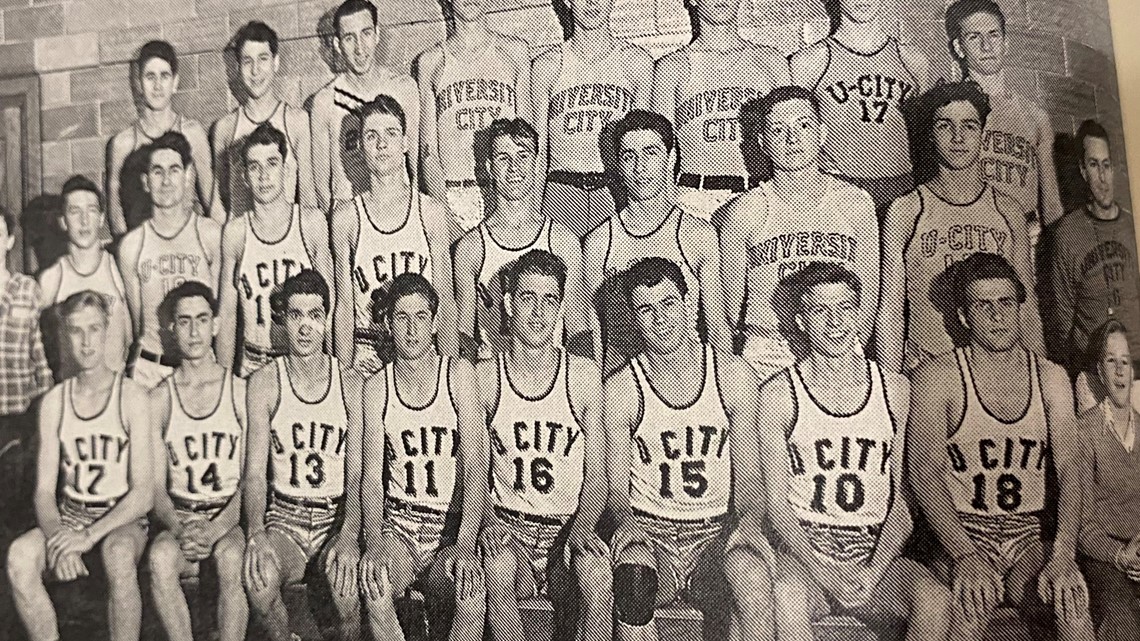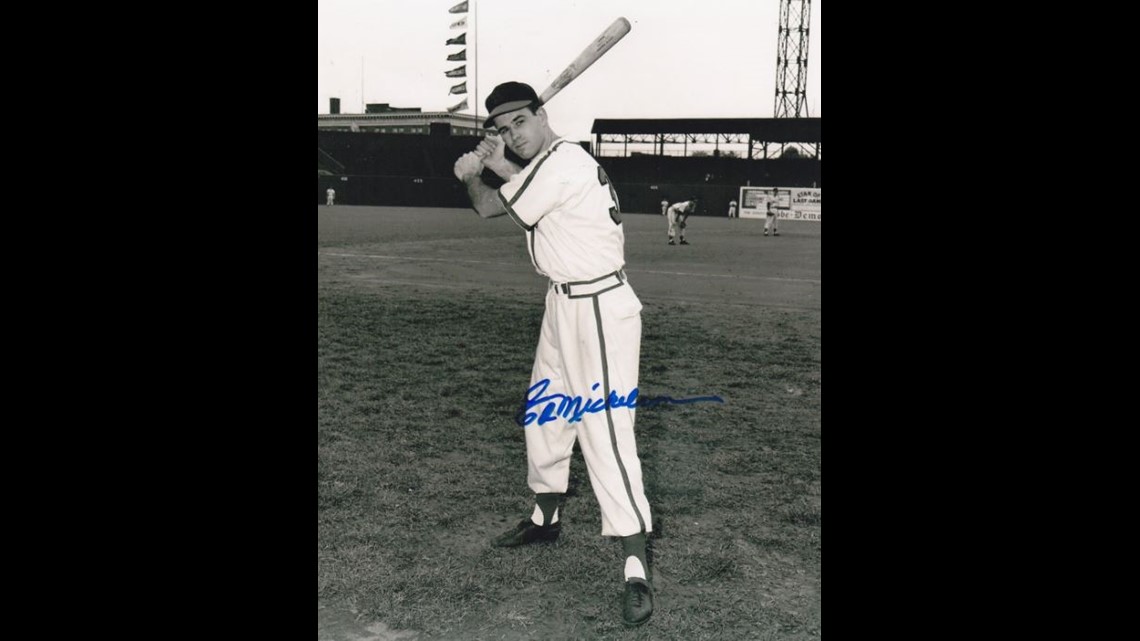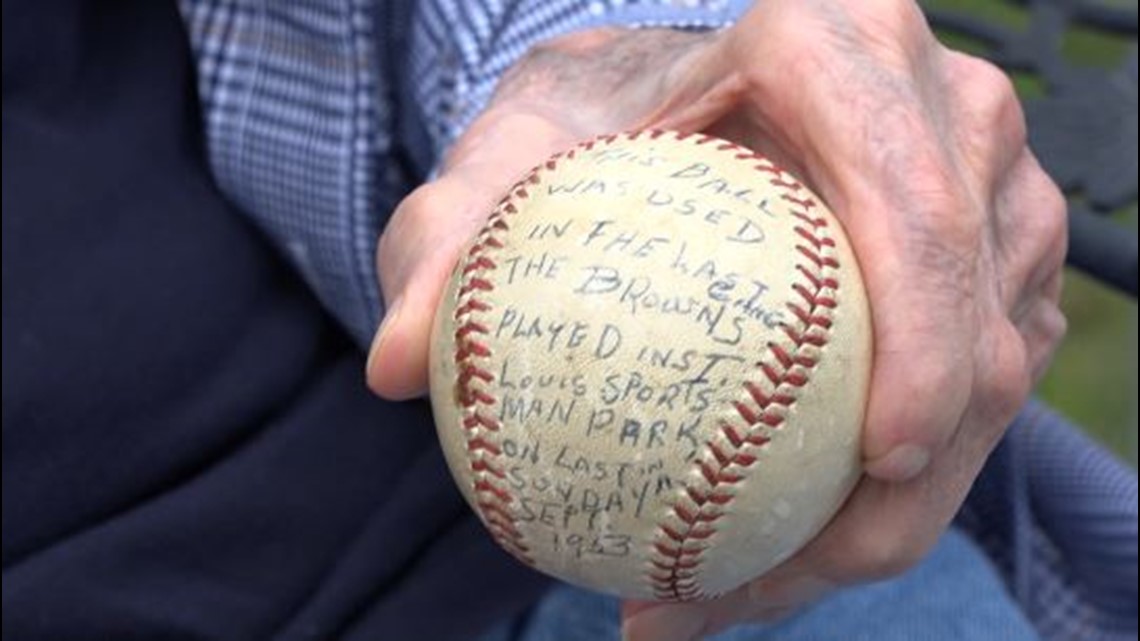ST. LOUIS — Ed Mickelson is like any other St. Louisan. Ed’s usually watching the Cardinals from his recliner on a nightly basis, and he has some of the same gripes we all have.
“I think there’s far too many strikeouts," Mickelson said.
But Mickelson has had a life unlike anyone else. And this 94-year-old has a pretty perfect way to describe his age.
“I'm six under," Mickelson said.
Born near Chicago, Michelson moved to St. Louis as a boy, growing up in a baseball-crazed city of the late 30s and early 40s. He excelled at football and basketball, too, playing both collegiately. He played football for the University of Tennessee before transferring to the University of Missouri, and also netted a spot on legendary Oklahoma A&M coach Hank Iba's team.


But with fewer than 30 baseball games in uniform under his belt, he got a tryout with his hometown Cardinals in 1947. After impressing in batting practice he was signed for $2,000.
“There was a vendor that had wooden boxes stacked up on top of one another right over the left-field bleachers. The bleachers were about 8 or 10 feet high. And I hit the top box and knocked the box off with the ball and the bottles went all over everywhere," Mickelson said remembering his batting practice tryout.
After toiling in the minors for a few years, Mickelson, a first baseman, finally got his first call up in 1950 on the road at the Polo Grounds in New York. And you bet he remembers his first at-bat, a strikeout.
“I remember that the umpire screwed me," Mickelson laughed.


A few games later, Mickelson got his first start, replacing a hall of famer and facing a hall of famer on the mound.
“'Hey kid', he (the manager) says. 'You’re playing today. Musial's got a 103-degree fever and he’s out for the day and you’re in there. Oh by the way, Warren Spahn is pitching'," Mickelson said. "Spahn was pitching and he pitches a two-hitter and I got one of the base hits off him.”
He got some reassurance before the game from another Cardinals legend.
“(Red) Schoendienst came up to me and put his arm around me and said, 'Hey Mick, I know you can play ball. I know you can hit. You’ll be alright. I know you’ve got butterflies in your stomach but you’ll be alright. Don’t worry about it.' And every time I saw Red after that I always complimented him on saying that to me. Because it was so compassionate," Mickelson said.
Mickelson spent most of his time in baseball in the minors, 11 years total, racking up some eye-popping statistics. He was a career .316 hitter in the minor leagues, with 108 home runs and 560 RBI in 1,189 games.
He spent just 93 days in the majors, collecting three hits in 41 at-bats.
“I only have one regret. and it’s not a big regret," Mickelson said. "I'm 3 for 38 in the big leagues. That bothers me.”
Along his travels, he met movie stars Elizabeth Taylor and James Dean in California, played against legends like Yankees slugger Mickey Mantle and with legends like the one and only Satchel Paige.
“He’s the greatest pitcher who ever lived as far as I'm concerned," Mickelson said.
“He (Satchel) would warm up with a matchbox on home plate… about five inches long… and he’d hit the inside and outside corners of the matchbox," Mickelson said. "They say pitching is all about location, location, location… there wasn’t a pitcher who ever lived who could put the ball exactly where he wanted to like Satchel Paige could.”


Mickelson’s biggest claim to fame came in 1953 as a member of the other hometown team, the St. Louis Browns, who were playing the role of (sometimes) lovable losers.
“It was first in booze, first in shoes and last in the American League," Mickelson said of the slogan the team picked up.
On September 27, 1953, he drove in the last run in the history of the Browns before they moved to Baltimore and became the Orioles we know today. In fact, in the final game the Browns ever played, the organization asked fans to throw foul balls back onto the field so they could continue playing because they had run out of baseballs.


Now, Mickelson is one of just five remaining Browns players still alive, and the only one still living in St. Louis.
“I feel like I'm representing some great, great guys, who were also some pretty damn good ballplayers," Mickelson said about carrying on the Browns legacy.
But it was at the end, and after his playing days were over, that Mickelson started his toughest battle; against depression.
“I remember taking a rope down to the basement. We had iron girders and I was going to put that up there and hang myself, Mickelson said. "I said, 'That would’ve hurt. No, I don’t think I'll do that.'"
“The last 35 years I've been happier than I've ever been. So you can get over it," Mickelson said. "It’s not that you can’t dig yourself out of the big hole that you’re in. But you can’t do it by yourself.”
Mickelson sought treatment, and then went on to become a long-time counselor and coach at University City and Parkway Central high schools. He also has cherished his time with his late wife Jo Ann, and current wife, Mary, as well as his children.
"I got some psychological help," Mickelson said. "Even today people frown on that and make fun of it, the mental aspect. But it helped me. It got me through a couple years that I was home but I was still dealing with depression. And I slowly worked out of it.”
Now, all this time later, he’s still here. He's still in St. Louis, still carrying on the legacy of the Browns and still sharing his incredible life story.
“What’s important about these stories... it’s history. It’s memories," Browns historian Ed Wheatley said. "Ed and I will go to retirement homes, and for so many people right now who are in their 70’s, 80’s and 90’s, who lived through the depression and World War II, the one thing they had was baseball. Baseball was their entertainment. It was some of their best memories.”
And just like the Browns themselves, the memories and lessons from Mickelson's incredible life, will always live on.
“If you keep putting one foot in front of the other, and keep thinking tomorrow’s another day, that helps a lot," Mickelson said. "One day at a time.”

